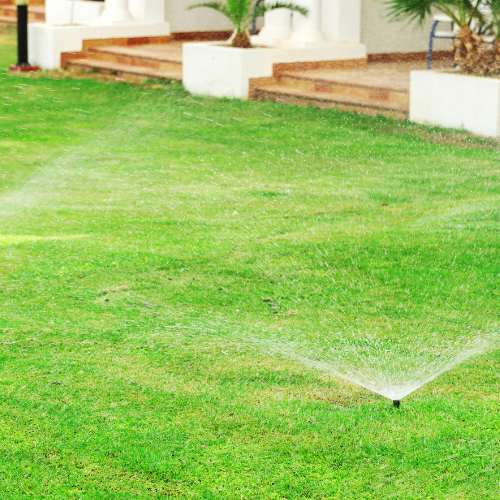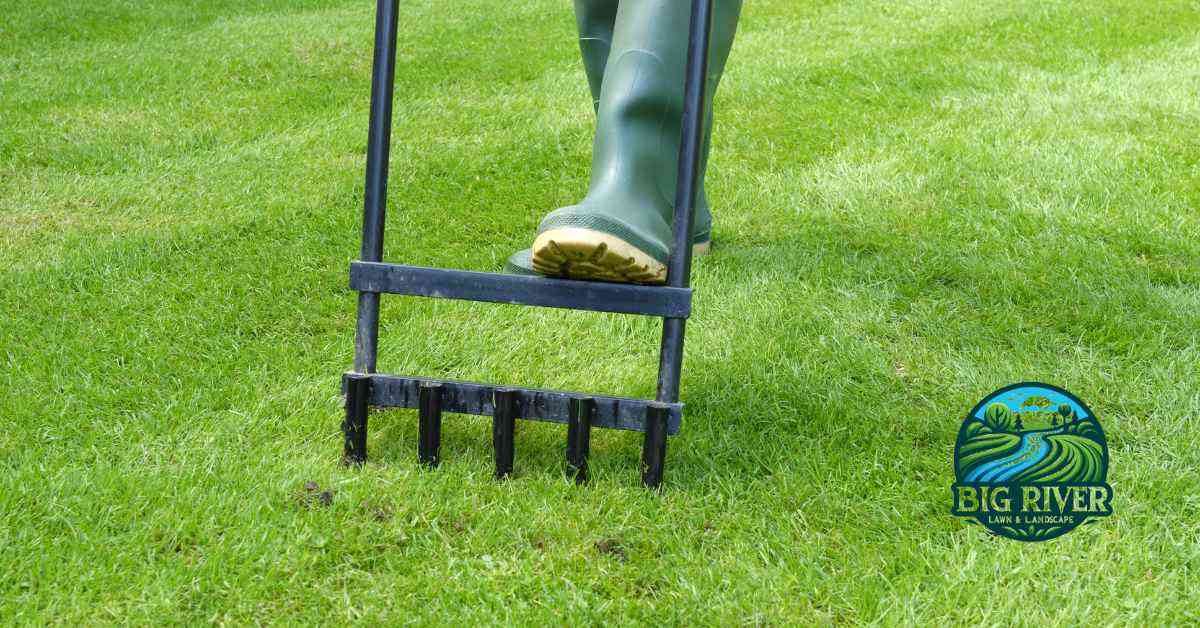Maintaining a healthy and lush lawn requires knowledge, dedication, and the right techniques. Whether you’re a seasoned lawn enthusiast or just starting, understanding the fundamental aspects of lawn care can make a significant difference in the vitality and appearance of your outdoor space. From soil health to watering practices and grass selection, each aspect plays a crucial role in fostering a vibrant lawn that enhances the beauty of your home. If you’re a beginner, then check out lawn care tips. Explore these top 10 lawn care tips and tricks to achieve the lawn of your dreams.
Our soil forms the foundation of a healthy lawn, influencing everything from nutrient uptake to water retention. By understanding your soil composition and pH level, you can make informed decisions about amendments and grass selection to ensure optimal growth. Moreover:
Importance of Soil Composition and pH for Healthy Lawn Growth
The composition of your soil, including its pH level, plays a significant role in determining the health and vigor of your lawn. Different grass species have specific soil preferences, so understanding your soil composition can help you choose the right grass varieties for your lawn.
Conducting Soil Tests to Determine Nutrient Levels and pH
Before embarking on any lawn care regimen, conducting a soil test to assess nutrient levels and pH is essential. Soil tests are readily available at garden centers or through local agricultural extension offices. These tests provide valuable insights into your soil’s health, enabling you to make informed decisions about fertilization and soil amendments.
Amending Soil As Needed With Compost, Lime, or Other Amendments
Based on your soil test results, you may need to amend your soil to correct nutrient deficiencies or adjust pH levels. Common soil amendments include compost, lime, and sulfur. Adding organic matter like compost improves soil structure and fertility, while lime or sulfur helps regulate pH levels for optimal grass growth.
Choosing Grass Varieties That Thrive in Your Specific Soil Conditions
Not all grass varieties are created equal, and selecting the right one for your soil conditions is paramount to a thriving lawn. Consider drought tolerance, disease resistance, and maintenance requirements when choosing grass varieties. Additionally, some grass species perform better in specific soil types, so tailor your selection to match your soil’s characteristics.
2. Proper Watering Techniques
Watering is essential for maintaining a healthy lawn, but it’s crucial to do it right. Deep, infrequent watering encourages strong root growth by allowing moisture to penetrate deeper into the soil. Tools like rain gauges or soil moisture meters helps determine when watering is necessary, preventing overwatering and water runoff. For more lawn care tips and tricks, check out below:

Importance of Deep, Infrequent Watering for Strong Root Growth
Watering is a fundamental aspect of lawn care, and your technique can significantly impact your grass’s health and resilience. Deep, infrequent watering fosters strong root growth and overall lawn vitality. Watering deeply encourages grassroots to extend deeper into the soil in search of moisture, resulting in a more drought-resistant and resilient lawn.
Conversely, frequent shallow watering can promote shallow root systems, making your lawn susceptible to drought and other environmental pressures. Therefore, adopting a deep, infrequent watering schedule is essential for cultivating a lush, resilient lawn that thrives even during dry spells.
Using a Rain Gauge or Soil Moisture Meter to Determine Watering Needs
Determining when to water your lawn can be challenging, especially considering varying weather conditions and soil types. However, tools like rain gauges and soil moisture meters can provide valuable insights into your lawn’s watering needs. A rain gauge allows you to monitor precipitation levels, helping you gauge whether additional watering is necessary.
Meanwhile, a soil moisture meter measures the moisture content in the soil, enabling you to water your lawn only when it’s genuinely needed. Utilizing these tools can tailor your watering schedule to your lawn’s specific requirements, avoiding both under-watering and over-watering and ensuring optimal moisture levels for healthy turf growth.
Watering Early in the Morning to Minimize Evaporation and Fungal Growth
The timing of your watering sessions can significantly impact their effectiveness and the overall health of your lawn. Watering early, ideally before 10 a.m., is widely recommended for several reasons. Firstly, during the morning hours, temperatures are typically lower, reducing the risk of water evaporation and ensuring more efficient water uptake by the grassroots.
Additionally, watering in the morning allows the grass foliage to dry out during the day, minimizing the risk of fungal diseases like powdery mildew and brown patches. By prioritizing morning watering, you can maximize water efficiency and minimize the likelihood of lawn issues associated with excess moisture.
Avoiding Overwatering and Water Runoff by
Overwatering is a common mistake that can lead to many lawn problems, including root rot, fungal diseases, and nutrient leaching. To avoid overwatering, watering your lawn slowly and deeply is crucial, allowing the water to penetrate the soil rather than running off the surface. One effective method is to use a sprinkler system with adjustable settings to deliver water evenly and at a controlled rate.
Furthermore, observe your lawn’s drainage patterns to identify areas prone to water runoff and adjust your watering schedule or technique accordingly. By being mindful of water usage and implementing strategies to prevent overwatering and runoff, you can maintain a healthy, vibrant lawn while conserving water resources.
3. Choosing the Right Grass Type
Selecting the right grass type is critical in achieving a beautiful and resilient lawn that thrives in your specific environment. Understanding the characteristics of different grass species allows you to choose varieties well-suited to your climate, soil type, and sun exposure. Furthermore:
Understanding Different Grass Species and Their Characteristics
Grasses vary in characteristics such as texture, color, growth habits, and maintenance requirements. Common grass species include Kentucky bluegrass, perennial ryegrass, and tall fescue, each with unique attributes.
Selecting Grass Varieties Based on Climate, Soil Type, and Sun Exposure
When choosing grass varieties for your lawn, consider your local climate, soil type, and sun exposure. Some grass species thrive in full sun, while others prefer shade or tolerate various conditions.
Considering Factors Such As Drought Tolerance, Disease Resistance, and Maintenance Requirements
Evaluate grass varieties based on their drought tolerance, disease resistance, and maintenance requirements. Choose varieties that suit your climate and maintenance preferences to ensure a healthy, low-maintenance lawn.
Blending Grass Seed Varieties for a Resilient, Attractive Lawn
Different grass seed varieties can create a more resilient and visually appealing lawn. Blend grasses with complementary characteristics to achieve a lush, uniform lawn that withstand various environmental stressors.
4. Lawn Aeration and Dethatching
Lawn Aeration and dethatching are essential for promoting healthy soil and vigorous root growth in your lawn. Aerating your lawn alleviates soil compaction, allowing air, water, and nutrients to penetrate the soil more effectively. Recognizing signs of thatch buildup and addressing them promptly helps prevent issues like disease and nutrient deficiencies.
Importance of Aerating to Alleviate Soil Compaction and Promote Root Growth
Aeration is a vital practice for maintaining a healthy and vibrant lawn. Over time, soil compaction occurs due to foot traffic, heavy machinery, and natural settling. This compaction restricts the movement of air, water, and nutrients to the grassroots, hindering their growth and overall health. The benefits of Aeration also involve perforating the soil with small holes to alleviate compaction and allow vital resources to penetrate deeper into the ground.
Moreover, aeration stimulates root growth by creating space for new roots to develop and extend. Stronger, deeper roots lead to a more resilient lawn that can withstand drought, pests, and disease. By incorporating aeration into your lawn care routine, you can promote lush, green grass that enhances the beauty of your outdoor space.
Identifying Signs of Thatch Buildup and Its Impact on Lawn Health
Thatch is a layer of dead grass, roots, and other organic matter that accumulates between the soil surface and the actively growing grass blades. While a thin layer of thatch can be beneficial, excessive buildup can harm lawn health. Signs of thatch buildup include spongy or springy turf, water runoff instead of absorption, and increased susceptibility to pests and diseases.
Thatch impedes the movement of air, water, and nutrients into the soil, leading to shallow root systems and weak turf. It also creates a hospitable environment for pests and diseases to thrive, further compromising the health of your lawn. Regular dethatching is essential to remove excess thatch and maintain optimal lawn conditions.
Tools and Techniques for Core Aeration and Dethatching
Core aeration and dethatching are two primary methods to improve soil structure and promote healthy turf growth.
- Core Aeration: This process involves using a specialized machine called a core aerator to remove plugs of soil from the lawn. These holes allow air, water, and nutrients to penetrate deep into the soil, promoting root growth and alleviating compaction. Core aerators come in various sizes, including walk-behind and tow-behind models, and can be rented or purchased from hardware stores.
- Dethatching: Dethatching is mechanically removing excess thatch from the lawn. This can be done using a dethatching rake with sharp blades designed to cut through the thatch layer and lift it from the soil surface. Power dethatchers or vertical mowers may expedite the process for larger lawns. Dethatching should be performed when the thatch layer exceeds half an inch in thickness.
To achieve the best results, both core aeration and dethatching should be done when the soil is moist but not waterlogged. After aerating or dethatching, proper watering and fertilization are essential to promote recovery and encourage new growth.
Timing and Frequency of Aeration and Dethatching Based on Grass Type and Soil Conditions
The timing and frequency of aeration and dethatching depend on various factors, including grass type, soil condition, and climate.
- Cool-season grasses such as Kentucky bluegrass, fescue, and ryegrass benefit from fall aeration, allowing them to recover and establish strong root systems before winter dormancy. Spring aeration can also benefit cool-season grasses, especially if the lawn experiences heavy foot traffic.
- Warm-season grasses like Bermuda grass, zoysia grass, and St. Augustine grass thrive during summer and can be aerated in late spring or early summer to coincide with their peak growth period.
Dethatching should be performed as needed based on the thickness of the thatch layer. Generally, cool-season grasses may require dethatching every 1-3 years, while warm-season grasses may only need dethatching every 2-4 years.
5. Optimal Sunlight Exposure
Sunlight is a crucial factor in the growth and development of your lawn, influencing factors such as photosynthesis and temperature regulation. Understanding the sunlight requirements of different grass species allows you to choose varieties that match the conditions of your lawn. Moreover, check out the lawn grass care tips:
Understanding the Sunlight Requirements of Different Grass Species
Different grass species have varying sunlight requirements, so choose grass types that match the sunlight your lawn receives.
Assessing Your Lawn’s Sun Exposure Throughout the Day and Year
Monitor your lawn’s sunlight exposure throughout the day and year to identify areas with insufficient or excessive sunlight.
Strategies for Maximizing Sunlight Exposure Through Pruning Trees, Removing Obstacles, or Selecting Shade
Enhance sunlight exposure by pruning trees, removing obstacles, or planting shade-tolerant grass varieties in shaded areas. Follow these lawn care tips for better lawn health.
Monitoring and Adjusting Lawn Care Practices Based on Changes in Sunlight Patterns
Adapt your lawn care routine based on changes in sunlight patterns to ensure consistent and healthy growth.
6. Proper Mowing Techniques
Proper mowing practices are essential for your lawn’s overall health and appearance. Following correct mowing techniques can encourage strong root growth, prevent weed infestations, and promote a lush, green lawn.

Importance of Correct Mowing Height
The height at which you mow your lawn significantly impacts its health and resilience. Cutting grass too short can weaken the root system and make it more susceptible to drought and disease. Conversely, allowing grass to grow too tall can create an ideal environment for pests and disease. Understanding the optimal mowing height for your grass type ensures vigorous growth and a healthier lawn overall.
How to Adjust Mower Blades for Optimal Cutting Height
Adjusting your mower blades to the correct cutting height is crucial for maintaining a healthy lawn. Most grass species thrive when mowed to a specific height, typically between 2.5 to 4 inches. Consult with your local gardening center or extension office to determine the recommended mowing height for your grass type.
Frequency of Mowing Based on Grass Type and Growth Rate
The mowing frequency depends on various factors, including grass type, growth rate, and environmental conditions. Generally, it’s best to mow when the grass reaches about one-third above its optimal height. This practice prevents shock to the grass and encourages a denser, healthier lawn. Adjust your mowing schedule accordingly to accommodate periods of rapid growth or dormancy.
Avoiding Cutting Grass Too Short (Scalping) Or Too Frequently
Scalping occurs when grass is cut too short, resulting in stress and susceptibility to weeds and disease. Avoid scalping by adhering to the recommended mowing height for your grass type. Additionally, resist the temptation to mow too frequently, as frequent mowing can weaken the grass and disrupt its growth cycle. Instead, maintain a consistent mowing schedule that promotes healthy turf growth.
7. Fertilizing Guidelines
Proper fertilization is essential for supplying essential nutrients to your lawn, promoting robust growth, and enhancing its overall health and appearance. So, lawn care and maintenance tips are ready. Check the below headings:
Understanding the Importance of Fertilizing for Lawn Health
Fertilizing provides essential nutrients such as nitrogen, phosphorus, and potassium, which are vital for healthy lawn growth. A well-fertilized lawn is more resilient to environmental stresses, such as drought and disease, and maintains its vibrant green color throughout the growing season. Understand the nutrient requirements of your grass species and soil type to develop an effective fertilization plan with lawn care safety tips.
Choosing the Right Fertilizer Based on Soil Type and Grass Species
Selecting the appropriate fertilizer for your lawn depends on factors such as soil type, grass species, and nutrient deficiencies. Conduct a soil test to determine nutrient levels and pH, guiding your fertilizer selection and application rates. Choose a fertilizer formula that matches the specific needs of your lawn, whether it’s a slow-release granular fertilizer or a liquid fertilizer for quick absorption.
Application Techniques for Even Distribution
Achieving an even distribution of fertilizer is essential for maximizing its effectiveness and preventing damage to your lawn. Use a calibrated spreader to apply fertilizer evenly across the lawn, following manufacturer recommendations for application rates. Avoid overlapping or missing areas to prevent uneven growth and potential fertilizer burn. Water your lawn thoroughly after fertilizing to help nutrients penetrate the soil and reach the roots.
Timing of Fertilization Throughout the Growing Season
Timing is crucial when it comes to fertilizing your lawn, as it ensures nutrients are available when the grass needs them most. Plan fertilization applications based on the specific nutrient requirements of your grass species and soil conditions. Typically, cool-season grasses are fertilized in the spring and fall, and warm-season grasses are fertilized in the late spring or early summer. Avoid fertilizing during periods of drought or extreme heat, as it can stress the grass and increase the risk of burn.
8. Weed Control Methods
Weeds can quickly invade and detract from the beauty of your lawn, competing with grass for nutrients, water, and sunlight. Implementing effective weed control and lawn care and maintenance tips is essential for maintaining a healthy and vibrant lawn.
Identifying Common Lawn Weeds and Their Control Methods
Understanding the types of weeds that commonly infest lawns and their growth habits is the first step in effective weed control. Identify common lawn weeds, such as dandelions, crabgrass, and clover, and learn about their life cycles and preferred growing conditions. Choose appropriate control methods based on the specific weeds present in your lawn, whether it’s manual removal, herbicide application, or cultural practices.
Pre-emergent vs. Post-emergent Weed Control Strategies
Preventing weed growth before it becomes a problem is often more effective than treating established weeds. Pre-emergent herbicides target weed seeds before germinating, creating a barrier preventing them from sprouting. Post-emergent herbicides are applied to actively growing weeds and target them directly, killing or suppressing their growth. Determine the most suitable weed control strategy based on the types of weeds in your lawn and your preferred approach to lawn care.
Natural and Chemical Weed Control Options
Both natural and chemical weed control options are available, each with its advantages and limitations. Natural weed control methods include manual removal, mulching, and overseeding to outcompete weeds for resources. Chemical herbicides offer targeted control of specific weed species but require careful application to avoid damage to desirable plants and environmental impact. Choose the weed control option that aligns with your preferences, budget, and environmental considerations.
Importance of Maintaining a Thick, Healthy Lawn to Naturally Suppress Weeds
A thick, healthy lawn is your best defense against weed infestations, as dense turf crowds out weeds and prevents their establishment. Implement proper lawn care practices such as regular mowing, fertilizing, and watering to promote strong grass growth and minimize opportunities for weeds to take hold. Address bare patches or thin areas promptly by overseeding to fill in gaps and maintain a uniform lawn appearance.
9. Managing Lawn Diseases
Lawn diseases can wreak havoc on your turf, causing unsightly patches, discoloration, and even death of grass. Understanding common lawn diseases and implementing preventative measures is essential for preserving the health and vitality of your lawn. That’s why learn professional lawn care tips:
Recognizing Symptoms of Common Lawn Diseases Such As Brown Patch, Dollar Spot, and Powdery Mildew
Familiarize yourself with the symptoms of common lawn diseases, including brown patches, dollar spots, powdery mildew, and rust. Symptoms may include discolored patches, thinning turf, or the presence of fungal growth on grass blades. Proper diagnosis of lawn diseases is crucial for implementing effective treatment strategies and preventing further damage to your lawn.
Preventative Measures to Minimize the Risk of Diseases
Preventing lawn diseases begins with proper lawn care practices that promote strong grass growth and reduce environmental stressors. Maintain the recommended mowing height for your grass type, avoid overwatering, and ensure adequate sunlight exposure to minimize conditions favorable to disease development. Improve soil drainage, aerate compacted soil, and avoid excess thatch buildup to create an environment that is less hospitable to fungal pathogens.
Treatment Options Including Fungicides and Cultural Practices
When lawn diseases do occur, prompt treatment is essential to prevent their spread and minimize damage to your turf. Depending on the severity of the disease, treatment options may include fungicide applications, cultural practices such as aerating and dethatching, and adjustments to watering and fertilization routines. Consult with a lawn care professional or extension agent for guidance on selecting the most appropriate treatment for your specific situation.
Proper Disposal of Diseased Grass Clippings to Prevent Spread
Dispose of diseased grass clippings carefully to prevent the spread of fungal pathogens to other areas of your lawn. Avoid spreading infected clippings onto healthy turf or composting them with other organic matter. Instead, bag and discard diseased clippings in the trash or compost them separately in a designated area away from your lawn and garden.
10. Seasonal Maintenance Checklist
Maintaining a healthy lawn requires ongoing care and attention throughout the year. By following a seasonal maintenance checklist, you can ensure that your lawn remains in top condition and ready to withstand the challenges of each season. So check out these professional lawn care tips in detail:
Spring: Aeration, Dethatching, Overseeding, and Soil Testing
Kickstart the growing season with early spring lawn care tips by addressing key maintenance tasks such as aeration, dethatching, overseeding, and soil testing. Aerate compacted soil to improve air and water penetration, dethatch to remove built-up organic matter, overseed thin or bare areas to promote thick turf growth and conduct soil tests to assess nutrient levels and pH. Considering that this spring, lawn care tips can be a game changer.
Summer: Watering Practices During Hot Weather, Adjusting Mower Height
Adjust your lawn care routine to accommodate the challenges of hot weather and increased evaporation rates. Follow the recommended summer lawn care tips. Water deeply and infrequently to encourage deep root growth and drought tolerance, and adjust your mower height to a slightly higher setting to provide shade and protect the soil from excessive heat. Opting these summer lawn care tips can definitely benefit.
Fall: Raking Leaves, Winterizing Lawn Equipment, Final Fertilization
Prepare your lawn with fall lawn care tips for the winter months by removing fallen leaves, winterizing lawn equipment, and applying a final round of fertilizer. Rake leaves to prevent them from smothering the grass and contributing to thatch buildup, clean and store lawn equipment properly to prevent damage during the winter, and apply a slow-release fertilizer to provide nutrients for winter dormancy and early spring growth. So keep these fall lawn care tips in mind.
Winter: Protecting Lawn From Frost and Snow Damage, Planning for Next Season’s Maintenance
Protect your lawn from frost and snow damage by minimizing foot traffic and avoiding excessive salt application near grassy areas. Take advantage of the winter months with winter lawn care tips to plan for next season’s maintenance tasks, such as aeration, dethatching, and overseeding, and stock up on necessary supplies and equipment.
Closing Thoughts
Maintaining a healthy and vibrant lawn requires dedication, knowledge, and ongoing care throughout the year. By following these organic lawn care tips and seasonal maintenance guidelines, you can create a lush, green lawn that enhances the beauty of your outdoor space and provides a welcoming environment for your family and guests to enjoy.
FAQs on Lawn Care Tips
What Is the Best Treatment for a Lawn?
The best treatment for a lawn depends on its specific needs, including soil type, grass species, climate, and any existing issues such as weeds or diseases. Generally, a comprehensive approach that includes proper watering, mowing, fertilizing, and weed control is essential for maintaining a healthy and vibrant lawn.
How Do I Maintain My Perfect Lawn?
Maintaining a perfect lawn requires consistent care and attention to detail. Start by establishing a regular lawn care routine that includes proper watering, mowing, fertilizing, and weed control practices. Monitor your lawn for signs of stress, disease, or pests, and address any issues promptly. Additionally, aerate and dethatch your lawn as needed to promote healthy root growth and soil health.
How Do I Make My Lawn the Most Beautiful?
To make your lawn the most beautiful, focus on promoting healthy turf growth and enhancing its overall appearance. Start by selecting the right grass species for your climate and soil type, ensuring it receives adequate sunlight and water. Maintain the correct mowing height and frequency, fertilize regularly to provide essential nutrients, and control weeds and pests as needed.
How Can I Make My Grass Thick and Nice?
To make your grass thick and nice, focus on promoting strong root growth and dense turf coverage. Ensure your lawn receives adequate sunlight and water deeply and infrequently to encourage deep root growth and mow at the appropriate height to prevent scalping and promote healthy grass growth. Regularly fertilize your lawn with a balanced fertilizer to provide essential nutrients, and overseed thin or bare areas to promote thick turf growth so that you don’t need to look for lawn care DIY tips.
What Fertilizer Thickens Grass?
Several types of fertilizers can help thicken grass by providing essential nutrients for vigorous growth. Look for fertilizers labeled as “lawn thickening” or “turf builder,” which typically contain a balanced blend of nitrogen, phosphorus, and potassium, along with other micronutrients. So always take care of your lawn with lawn care safety tips. Additionally, consider using organic fertilizers or compost to improve soil health and encourage thick, lush turf growth. Opt for organic lawn care tips.



